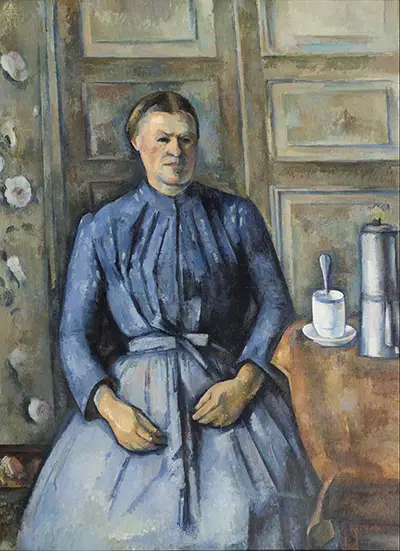Paul Cezanne achieved to develop his own unique painting style, which was a combination of Impressionism and Expressionism.
He infused the use unfinished and loose brushworks and common place themes with the subjective, multiple viewpoints and non-naturalistic approach to create his paintings like the Woman with a Coffee Pot painting. Paul Cezanne created this painting in the Impressionism period. Cezanne hoped that this painting would be a perfect representation of nature by using a mixture if geometrical motifs like cones, cylinders and spheres. His model for this painting was one of his employees at the Jas de Bouffan.
The woman in the foreground of the painting sits there to be a representation of a tall tower that Cezanne uniquely achieved by the use of vivid colours and the result was a monumental painting. A closer look at the painting and one would immediately realise that Cezanne’s objective was to focus on the forms rather than the character in this painting.
The figure of the woman in the painting plus the cup and the pot were all painted in a unique way that depicts a highly abbreviated style of utilising a form of proper arrangement of vertical and horizontal lines and the viewpoints keep changing as you continue delving into the details of the painting. For instance, it is easily noticeable that the woman and the cup can be perceived from the side while the table is perceived from the top. Furthermore, he employs the use of subjective distortions, a style that helped him to effectively capture the roughness of the woman’s hands and the dignity of her plain face.
This technique enabled him express his feelings of strong empathy for simplistic human beings that live unchanging lives. The materials used were oil based paints and canvas. Even though Paul Cezanne’s woks only came to receive public acceptance in his career’s last decade, his ability to see through the common fundamentals of logical structures in paintings drew a lot of admiration from his colleagues. His painting styles were a great influence of the 20th century abstract art.
Some notable names that derived inspiration from his works include Gaugin, Matisse, Marcel Duchamp, Picasso, Kazimir Malevich and Pierre Bonnard. However, in his career, Paul Cezanne looked up to some great artists who were instrumental in shaping his career as an accredited painter. One of the greatest influences of his career in painting was his teacher and friend, Camille Pissarro. Other influences in his career were the likes of Édouard Manet, Eugène Delacroix and Théodore Géricault.




